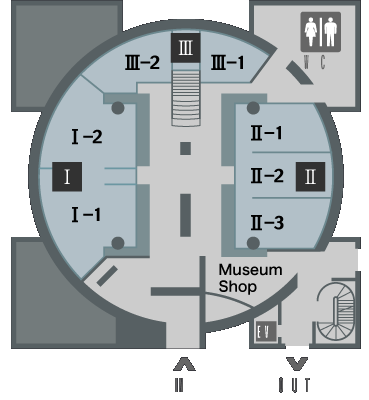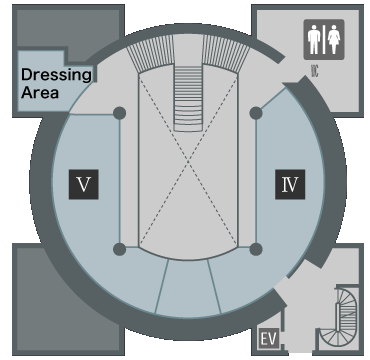|
Special Exhibition
FASHIONING INDIA

India Fashion Now
“Fashioning India,” or creating Indian fashion, is a process of seeking for what is unique about being Indian. The process involves shaping abstract images of India into forms, and in this sense also, creating Indian fashion is at the same time “Fashioning (i.e., forming) India.”
The first floor consists of three zones viewing current fashion in India.
I. Exotic India
1. Inspiration from the Maharajas
The technique of fabric dyeing, nurtured by Indian tradition, is revived in today’s Wedding fashions, the gorgeous garments evoking images of the Maharajas in colonial times.
2. Alluring Rajasthan
Rajasthan is often associated with the image of rural India. Beautiful embroideries and luminous ornaments that were used on local everyday clothes, developed into what is now called “Ethnic chic mode”.
II. ‘Indo-Modern’ World
1. Revival of Handicrafts
Handicraft techniques, which had gradually disappeared from the daily lives of people and had become obsolescent, are now being brought back into the craft centers of young designers and are now the mode.
2. Mixing Regional Traditions
While sari shops compete with one other over the latest designs, a new type of sari has been produced by blending new designs and techniques with a variety of traditional regional designs.
3. Creole Fashions
New dress styles which take advantage of traditional handiwork with modern methods of production using black and white as base colors blend into what can be referred to in this era of globalization as Creole Fashion.
III. Nationalism and Fashion
1. Creating National Dress Styles
In the midst of the independence movement, Indian tradition was re-evaluated. A movement to give up machine-made products and value handmade products was initiated and the sari became the national dress in India.
2. Where Art Meets Fashion
The image of an Indian woman with a sari was spread through various art forms, such as painting, dance, music and movies. Today, the sari itself has become an art form.
The Dynamism of Indian Textiles
Indian textiles were introduced to the rest of the world across the Indian Ocean. Indian textile production centers prospered through their relationship with these trade networks. The large volume of Indian textiles, loaded on European ships at Indian ports, greatly influenced Asian, African and European fashion. The second floor consists of two zones that display the dynamic extension of Indian textiles.
IV. Traveling Textiles
Beautiful Indian textiles have been the focus of admiration throughout the ages among people the world over. Indian textiles carried by European ships brought a fashion revolution in the East and the West.
V. Regional Varieties
Traditional Indian sari varies by region, material, and fabric-dyeing technique. Also, the way to wear a sari varies according to one’s locality, class, and religion.
Dressing Area: You can try saris on and take photographs.
|








